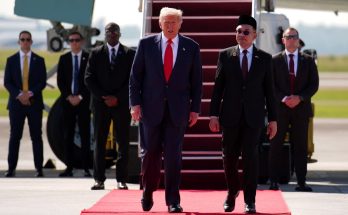
The serial bombings in Bodh Gaya on July 7, 2013, which resulted in no fatalities as a consequence, presumably, of extraneous factors – in particular, the damp weather – have once again exposed India’s total vulnerability to terrorist attack, particular at ‘soft target locations’. This is, no doubt, worrisome, but it cannot be the core of our concerns. In the wake of each past terrorist attack, there has been an unfortunate tendency to focus on the contours of the specific instance, and the possible or known identities of particular perpetrators in a media storm that lasts for a few days. After this, the business is all but forgotten.
Investigators may – or may not – eventually, identify and possibly, by some fortuitous concatenation of events, even prosecute some of the perpetrators of the Bodh Gaya incident. India’s vulnerabilities to terrorism will not be altered even a whit by this outcome.
Two interlinked aspects of the Bodh Gaya attacks, however, have some potential to impact the future trajectory of terrorism. This is the first time that a Buddhist shrine – and that, too, a global Buddhist hub attracting pilgrims from many Southeast Asian countries – has been attacked on the Indian soil. If this draws one more religious community into the circle of terrorist conflict in India, even as victim, the development will be fraught with consequences within the communally charged atmosphere of this country, and its perverse, polarizing, politics. If, moreover, as is being speculated, these attacks are linked, even indirectly as ‘justification’ by their perpetrators, to the targeting of Rohingya Muslims in Myanmar, a fresh ‘theatre’ or potential source of terrorism may progressively be activated, creating new headaches for India’s security establishment.
It is crucial, at this stage, to reiterate that nothing has conclusively been established by the investigations: the identity of the perpetrators, their motives, and any linkages with the Rohingyas, remain a matter purely of speculation, not of fact.
Radicalising Rohingyas
Whatever the eventual outcome of investigations, in this specific case it is useful to recognise the mischief that is afoot. Islamist terrorist organisations, backed by Pakistan’s Inter Services Intelligence (ISI), have openly declared their intention to exploit the Rohingya issue to foment violence against India. On 14, June 2013, for instance, Hafiz Mohammad Saeed, the head of the ‘banned’ Lashkar-e-Taiba (LeT), who operates openly and with impunity from Pakistan, declared, “Indian government is working in cahoots with Burmese Government to wipe out Muslim population of Burma… It is also an obligation on the whole Muslim Ummah to defend the rights and honour of Rohingya Muslims in Burma.” In September 2012, Ustad Farooq, the head of Al-Qaeda’s ‘preaching and media department’ in Pakistan, had warned that the killings of Muslims in Myanmar and Assam “provide impetus for us to hasten our advance towards Delhi… I warn the Indian Government that after Kashmir, Gujarat… you may add Assam to the long list of your evil deeds.” The radicalization of Rohingya Muslims by Pakistani agents provocateurs is a process that has been documented since 1999 (LINK: http://www.satp.org/satporgtp/publication/books/global/sahni.htm], and intelligence confirms that this process has intensified in recent times. In recent months, both LeT and other groups have taken Rohingyas to Pakistan for training. US, Bangladeshi and Singapore intelligence agencies have confirmed that Rohingya Muslim radicals trained at a LeT camp in Pakistan in May 2012. India’s Research and Analysis Wing (R&AW) had, in January 2013, indicated that LeT had created a group, the Difa-e-Musalman Arakan (Defence of Muslims in the Arakan) in Myanmar’s Arakan area, and was mobilising cadres to fight the Myanmar government. R&AW also underlined links between Rohingya radicals and groups such as Jaish-e-Mohammed of Pakistan, and Harkat-ul-Jihad Islami and Jamaat-ul-Mujahideen of Bangladesh. A new group called the Jamaat-ul-Arakan had also been formed, and was said to be running training camps in the remote Bandarban District of Bangladesh, adjoining Myanmar. R&AW claimed that Rohingya radicals were receiving funds principally from Saudi Arabia, training from Pakistan-based operatives, and weapons sourced from Thailand.
It matters little whether these developments are linked with Bodh Gaya. They are indices of a continuing Pakistani intent to foment extremism in the South Asian region, and to direct terrorist violence against India.
The Pakistan Factor
There has been the usual euphoria regarding India-Pakistan relations after the election of the new prime minister Nawaz Sharif in Pakistan; a euphoria that has recurred after every new regime – military or elected – has assumed power in Islamabad. In New Delhi, all eyes are immediately wide shut, till they are forced open only by a terrorist attack or other act of extreme violence, sourced from Pakistan. A brief ‘sulk’ ensues, where the powers that be on Raisina Hill declare that they will have no truck with Islamabad till the “infrastructure of terrorism has been dismantled”, but this does not last long, and importunate ‘Track 1’ and ‘Track 2’ suitors quickly queue up in Islamabad to restore ‘peace processes’ that ignore the cumulative weight of evidence of Pakistan’s continuing perfidy.
The beheading of an Indian soldier on January 8, 2013, was just a passing ‘hiccup’ for the ‘peace makers’ in Delhi. Partial data on violent incidents along the Line of Control and the International Border in Kashmir indicate that at least 41 such incidents have been recorded in 2013, resulting in 19 fatalities; 14 of these incidents, and 14 fatalities, have occurred after Nawaz Sharif took over as Prime Minister on June 5, 2013. Three violations of the Ceasefire Agreement were recorded during Prime Minister Manmohan Singh’s visit to J&K on June 25-26. There have been seven terrorist attacks in the state since Sharif took over, six on Security Force contingents; 14 SF personnel and one civilian have been killed. 15 militants have also been killed in six encounters over this period.
Nothing suggests that Pakistan’s broad ideological and strategic framework has undergone any drastic transformation. Pakistan-backed terrorism, consequently, will remain a reality in India in the foreseeable future, and is very likely to experience an escalation after the 2014 US ‘withdrawal’ from Afghanistan.
The Way Ahead

There are only two instrumentalities that will help us plug our vulnerabilities to future terrorist attacks emanating from ISI/Pakistani malfeasance. The first is far better intelligence and internal security arrangements across the country; the second is the capacity to impose unbearable costs on Pakistan. Both these are a function of power; this, in turn, is a function of intent, capacity and capability. Unless these are developed in sufficient measure, within a clearly conceptualized and articulated strategic framework, Indians will continue to be killed in recurrent terrorist violence – their frequency and lethality defined by the intent, capacity and capability of India’s abiding enemies.
(Ajai Sahni, a well-known counter-terror expert, is Executive Director, Institute for Conflict Management and South Asia Terrorism Portal; Editor, South Asia Intelligence Review. The article reflects the author’s personal views, and has been written exclusively for www.indiawrites.org)




